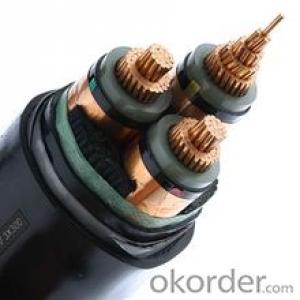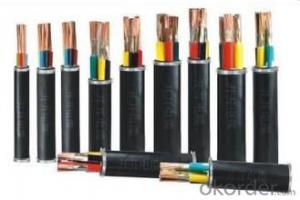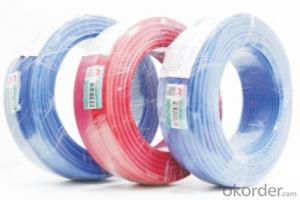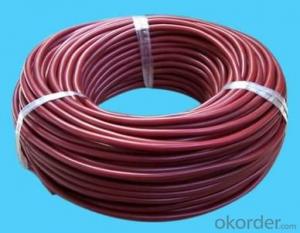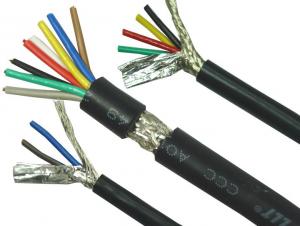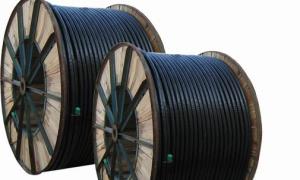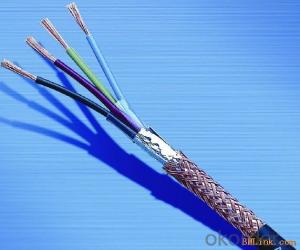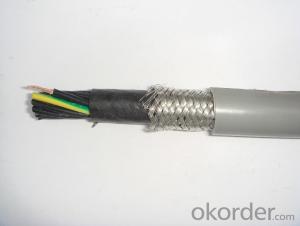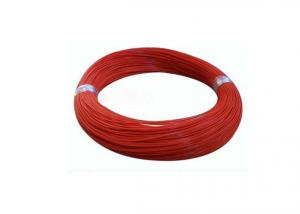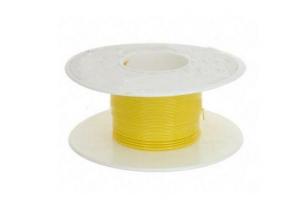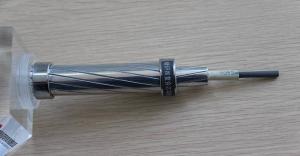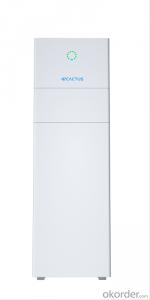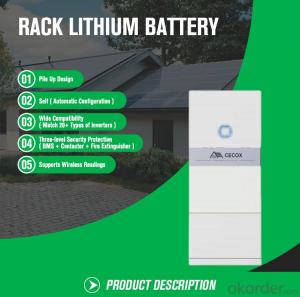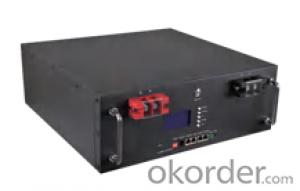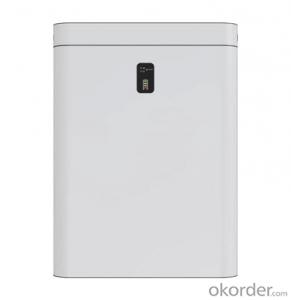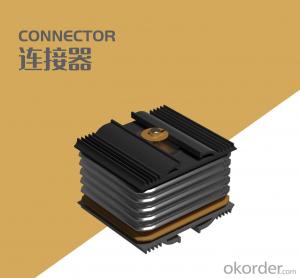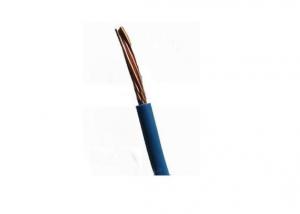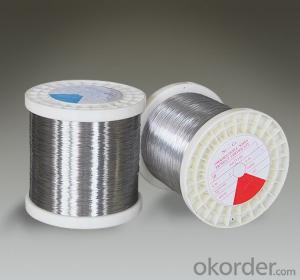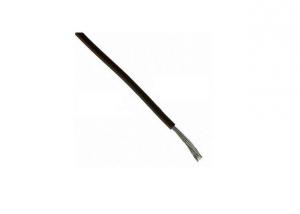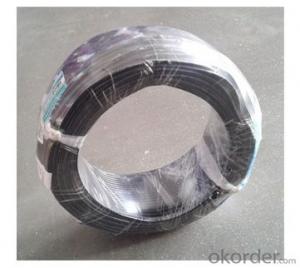PVC/PE/XLPE/Copper/Insulated/Copper/Rubber Cable
- Loading Port:
- China main port
- Payment Terms:
- TT OR LC
- Min Order Qty:
- 100 m
- Supply Capability:
- 20000 m/month
OKorder Service Pledge
OKorder Financial Service
You Might Also Like
Specifications
1 IEC, ASTM, DIN, BS standard
2 ISO,CCC,CB certification
3 Response within 12 hours
4 Free Sample
5 Factory direct sale
POWER CABLE
XLPE INSULATED POWER CABLE
COPPER(ALUMINMU)CONDUCTOR XLPE INSULATED PVC SHEATHED POWER CABLE RATED VOLTAGE UP TO 35KV
Brief introduction about XLPE Insulated Power cable
Cross-linked polyethylene insulated power cable do not only has excellent electric, mechanical proper-ties,but also has powerful resistance against chemical corrosion,heat resistance and environmental stress resistance. Its structure is simple,the long period operating temperature is +90°C. It is convenient to use and can be laid with no restriction of different level.
APPLICATION
XLPE insulated power cables has a number of advantages over paper insulated and PVC insulated cable.XLPE cable has high electric strength, mechanical strength,high-ageing resisting,environmental stress resisting anti-chemical corrossion,and it is simple construction, using convenient and higher operating of long term temperature. It can be laid with no drop restriction.
Various of flame-retardant and non-flame retardant XLPE cable can be manufactured with three technology(peroxide,silance and irradiation crosslinking). The flame-retardant cable covers all kinds of low-smoke low-halogen,low-smoke halogen free,and non-smoke nonhalogenated and three slasses of A,B,C.
We can produce the cables as per GN, IEC,BS,VDE, AS/NZS,ICEA,JIS.
TYPE | VOLTAGE | ||||
No.of cores | 0.6/1kV | 6/6kV, 6/10kV | 8.7/15kV, 12/20kV, 18/30kV | 19/33kV, 26/35kV | |
Mm² | |||||
COPPER/XLPE/PVC | 1 | 1.5~800 | 25~800 | 35~1200 | 50~1200 |
AL/XLPE/PVC | 2.5~1000 | 25~1000 | 35~1200 | 50~1200 | |
COPPER/XLPE/SWA (STA,AWA)/PVC | 10~1000 | 25~1000 | 35~1200 | 50~1200 | |
COPPER/XLPE/PVC | 3 | 1.5~400 | 25~400 | 35~400 | 50~400 |
AL/XLPE/PVC | 2.5~400 | 25~400 | 35~400 | 50~400 | |
AOPPER/XLPE/AWA (STA)/PVC | 4~400 | 25~400 | 35~400 | 50~400 | |
- Q:When assembling electrical wiring, what is the small circle on the wire?
- The essence of this problem is: how to interpret "Ming Fu 1KV and below the power and control cables, and more than 1KV power cable should be laid separately" I think: the wire is generally laying with a trunking or threading pipe, and low-voltage cable from the bridge, tray, trunking and threading laying, wire and low voltage cable voltage levels are below 1KV, therefore, from the normative point of view, And low-voltage cables can be laid in a trunking, if from the maintenance point of view, and so other aspects of consideration is another matter.
- Q:I was sitting in my living room, when I heard a loud POP. A couple minutes later, I went to the refrigerator and seen that it wasn't working (no power). I checked the fuse box, and there is a fuse blown. I tried to reset it, but it just makes a loud pop noise, and flips. It will not reset. There is nothing plugged into those outlets other than the refrigerator and our water dispenser machine. These same two things have been plugged in for years, without any issues. Is this most likely a short somewhere in the wiring?
- If the fuse in the fuse box is blown it is telling you that something along the line is shorting out and dangerous. I would remove the mains fuse and then check the wiring and plug for any damage. Check the fridge where the wiring enters for fraying or any damp. If you cant find an obvious fault get an electrician and on no account put a higher mains fuse in !!
- Q:I have 4 cats and all of them at one time or another have chewed through an electrical wire. One day, one cat chewed on my phone wire, I scooted him away, and the other came, chewed on the same wire, I scooted him away, and I turned around and my kitten was chewing on the wire! I have many broken appliances, fan, fax, light, that are now chewed through. why do they do it and how do I get them to stop?
- they look like string
- Q:1966 Mustang ignition wire seems to be getting too hot and melts any electrical tape on it.
- No it is not normal - for ANY wire to run hot enough to melt electrical tape. The resister wire for the coil generally runs warmer than one might expect, but this wire is a special case - and even this wire is only warm to the touch, not anywhere near hot enough to melt electrical tape. Something is definitely drawing too way much current. You'll have to isolate the defective or shorted component or wire.
- Q:I am putting in a RV pad and I need a 30amp electrical service what Gage of wire do I need it will be aprox 200' run maybe a little less
- at least 8 ga but 6 would give you the assurance for the distance and voltage drop
- Q:Can I run the single power from 3-wire 220 cord to both power receptacles in a hot tub panel made for 4-wire?
- You should call a qualified professional electrician who has done hot tubs and spas. This is not a DIY project. There are several very fine points about a hot tub installation that if done wrong or not 100% correct can prove dangerous or fatal to any users of the hot tub. There is just too many chances for one little mistake to cause a very serious injury. it is not worth the risk.
- Q:component of electrical wiring system according the appropriate street light. the voltage power supply and herzt(hz) using for street light.
- That product runs on 12 volts direct current (VDC). A standard receptacle is AC. A standard receptacle in the U.S. is 120 volts, AC. A standard receptacle in the UK is approximately twice that voltage, and is AC. You will need a transformer/rectifier to convert the AC of your countries voltage to 12 VDC DC. The product uses 60 watt bulbs. This means that they will each need 5 amps. The product has 8 bulbs. This means that you will need a total of 40 amps. Therefore, you need to buy a transformer/rectifier that plugs into a standard receptacle and produces at least 40 amps of 12 VDC power. After you buy one, connect it to the cable that comes with the product.
- Q:After taking off the old one, I noticed there are 3 different wires coming into the bracket. One looks like it goes to an outlet, or the breaker. One goes to the switch, and one goes in the direction of the kitchen.There is a single black that was connected to the fan, and that was it. All others were capped off. Now two blacks and a white were pigtailed with each other, while the other two white were pigtailed together. My question is: How do I install the fan?And why are these wires all over?The house was built in the 70s if it helps.
- I believe you have a lighting circuit that is coming into the box and leaving the box. The other cable is going to the switch. First, it is best to takes notes as you take something apart. The two blacks with the white is your hot, with the white going to the switch. This is called suicide switching. The other two whites are the neutral. Attach the black and red wires from the fan to the black wire that is by itself. This should be paired with the white wire that is spliced with the blacks. This is your switch leg. Attach the white from the fan with the other whites. Make sure all your connections are tight.
- Q:For industrial single-phase circuits in China (one 220V hot wire + one neutral wire), do you use normal one-pole breakers for isolation of just the hot conductor, or do they require two-pole breakers so that both hot wire and neutral wire are isolated from load at the 2-pole breaker? I heard rumor they want both wires isolated for single-phase.
- YES, it cuts out both lines from its simple breaker panel. Because for some reason ,in some area,its neutral was not really Zero volt and has perhaps 50V between Earth ground and neutral.
- Q:Going by the chart of wire sizes and how many amps different sizes can handle, here's my question. I see a # 10 guage wire can hold 30-35amps. However, can it hold more amps if it were being used for the neutral?
- No. There's a law called Kirchhoff's Law. Basically all the current from a power source must return to that power source. So, if 30 amps leaves on a hot (black) wire, then 30 amps must come back on the neutral (white) wire. The algebraic sum of currents in a network of conductors meeting at a point is zero. Power leaving the power supply (-) must equal the power returning to the power supply (+). If 30 amps leaves the power source (-30 amps) then 30 amps must return to the power source (+30 amps).
1. Manufacturer Overview |
|
|---|---|
| Location | |
| Year Established | |
| Annual Output Value | |
| Main Markets | |
| Company Certifications | |
2. Manufacturer Certificates |
|
|---|---|
| a) Certification Name | |
| Range | |
| Reference | |
| Validity Period | |
3. Manufacturer Capability |
|
|---|---|
| a)Trade Capacity | |
| Nearest Port | |
| Export Percentage | |
| No.of Employees in Trade Department | |
| Language Spoken: | |
| b)Factory Information | |
| Factory Size: | |
| No. of Production Lines | |
| Contract Manufacturing | |
| Product Price Range | |
Send your message to us
PVC/PE/XLPE/Copper/Insulated/Copper/Rubber Cable
- Loading Port:
- China main port
- Payment Terms:
- TT OR LC
- Min Order Qty:
- 100 m
- Supply Capability:
- 20000 m/month
OKorder Service Pledge
OKorder Financial Service
Similar products
New products
Hot products
